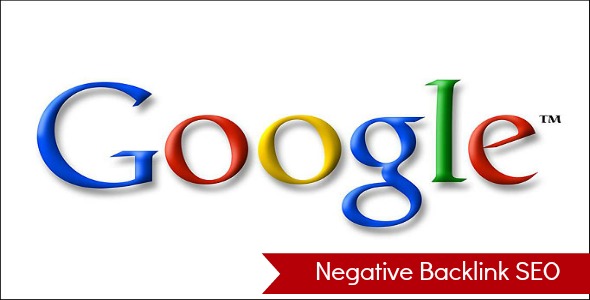Google has opened the door to an aggressive SEO tactic, Negative Backlink SEO.
Here’s what it is, how it works, how to tell if you’re being targeted and how to stop it hurting your business!
Negative backlink SEO
Google now proactively punishes sites, which are linked to from sites with a bad reputation. Previously, Google only punished you, if you linked from your site to a ‘bad neighbourhood’. This included link farms, article directories, link exchange portals, etc.
Now, you get punished if they link to you – even if you know nothing about it!
So, your competitors or anyone who would like to hurt your business, can do so simply by linking to your site from dubious sites or directories. They can do it anonymously too.
The move by Google is supposedly aimed at stopping websites from buying links or exchanging links, in order to boost their search rankings. Instead, it has created a huge headache and Google is showing no sign of relenting.
Are you being targeted?
The only way to know if your site is being targeted, is to monitor the sites that link to you. There are lots of tools to do this, some you pay for others are free.
If you use Google analytics, you can set up a Google Webmaster account for free and it will provide you with a list of all the links it can see, which point back to your site (backlinks). You can access Google Webmaster Tools here. The benefit of using Google’s solution is that it shows you what Google can see and as Google is the hub of the problem, this makes sense.
I have also found other backlink tools often inaccurate, when testing them. There are over 107,000 backlinks to Jims Marketing Blog, with most backlink apps and programs only able to find between 10% and 20% of them.
Fixing the problem
Technically, this should be pretty simple. You find the toxic links using Google Webmaster Tools, then send the links to Google, using their Disavow Tool – You can find it here. Google then disavows (or accepts you show no responsibility) for those links and stops penalising you. You then ask Google to reconsider the penalty it applied to you and hope for the best. Here’s how Google’s Disavow Tool works.
In reality, this can be a massive pain in the ass. New, toxic backlinks can be added to your site at any time, meaning you need to remember to check for new links, regularly.
Also, if you’re new to this, it can be hard to tell a valuable link from a toxic link. Some toxic links come from URL’s that look pretty normal and some genuinely great links come from URL’s that seem dubious. So, be very careful what links you decide to ask Google to disavow. Whilst you can reverse the process, it’s best to be sure before you disavow anything.
You can also email the site owner, to ask if they will manually remove the link or links to your site. Obviously, your success will depend on whether the site owner wants to help or even if the site linking to you is still being actively managed.
Google is not the only game in town
Google has never changed the rules as often or as dramatically as it does today. As I wrote a few days ago, many small business owners are seeing Google search traffic drop like a stone. I received dozens of emails from people following that post, whose businesses are suffering seriously from these changes. It’s a very real problem. One that Google seems oblivious to.
Thankfully Google is not the only game in town. It is just one component of Internet marketing.
So, regardless of whether you are being punished by Negative Backlink SEO or any of the other 3 changes Google has made recently, I strongly recommend you diversify your Internet marketing.
